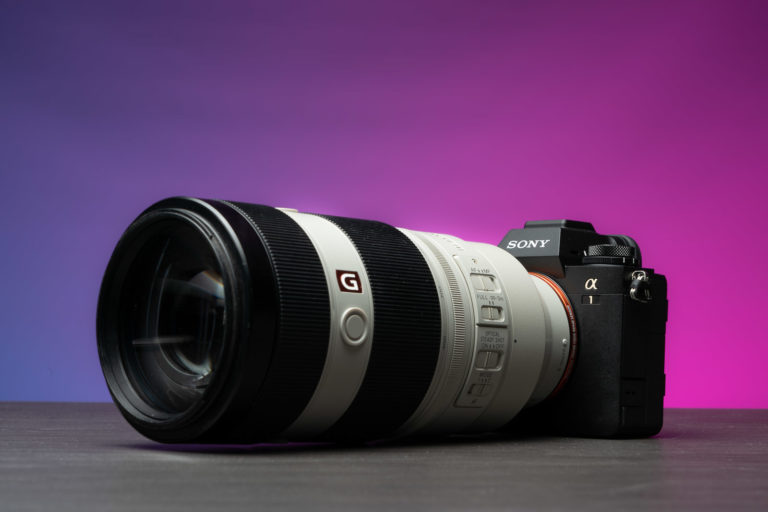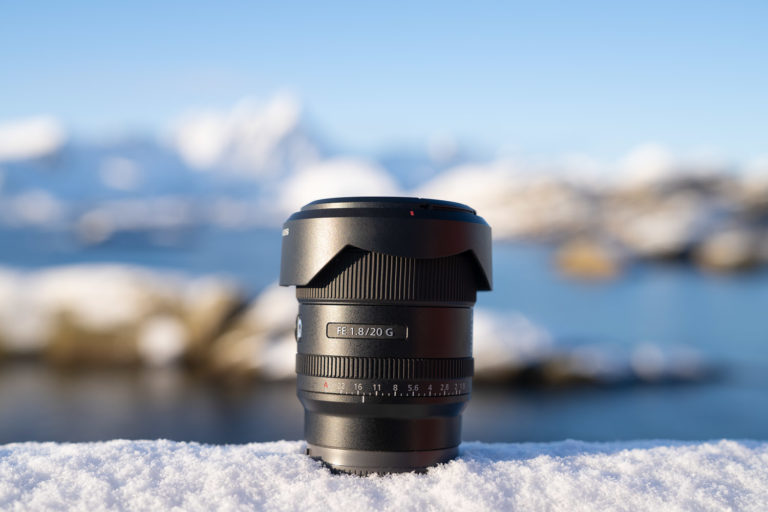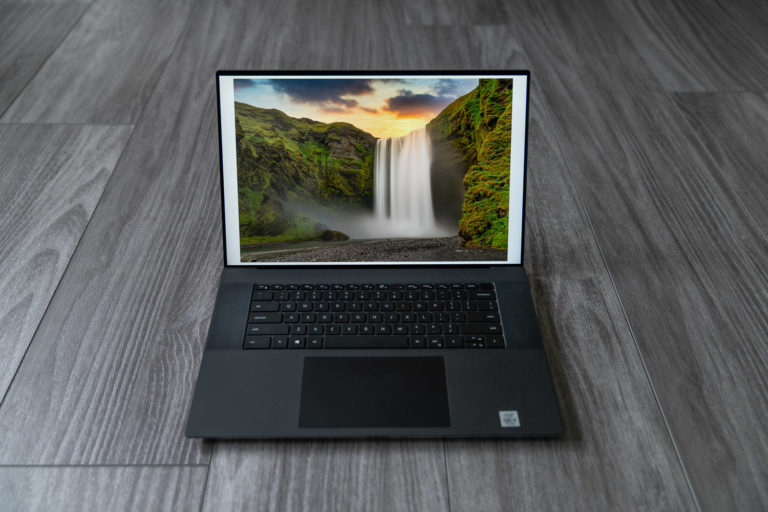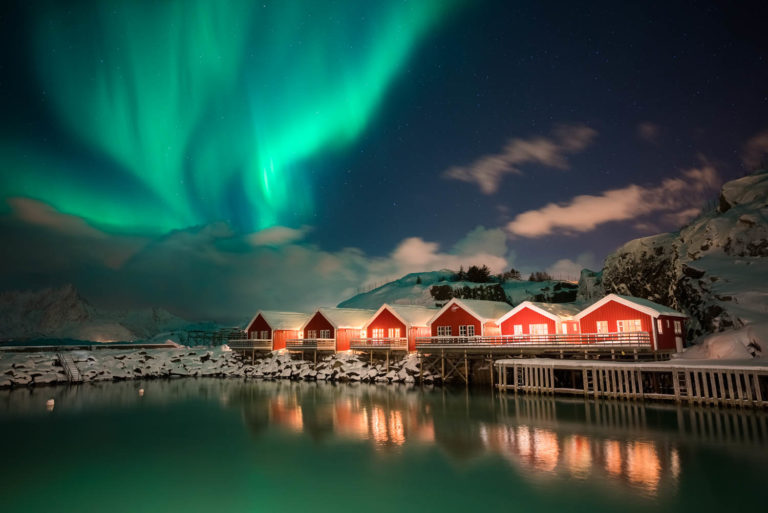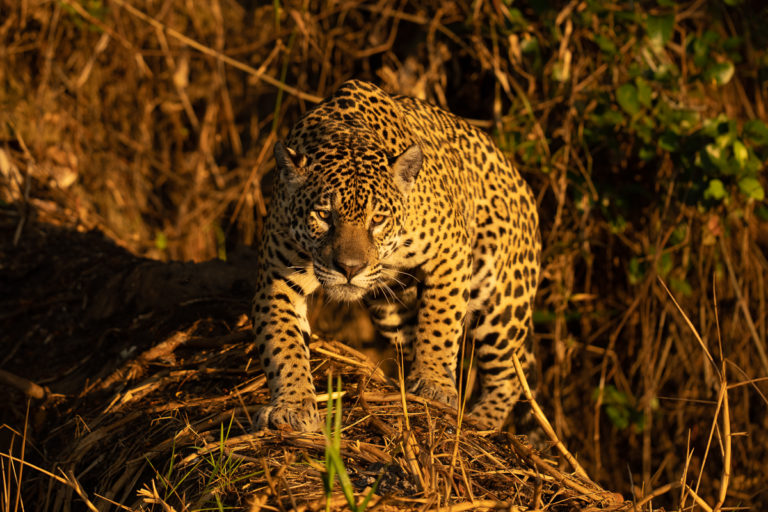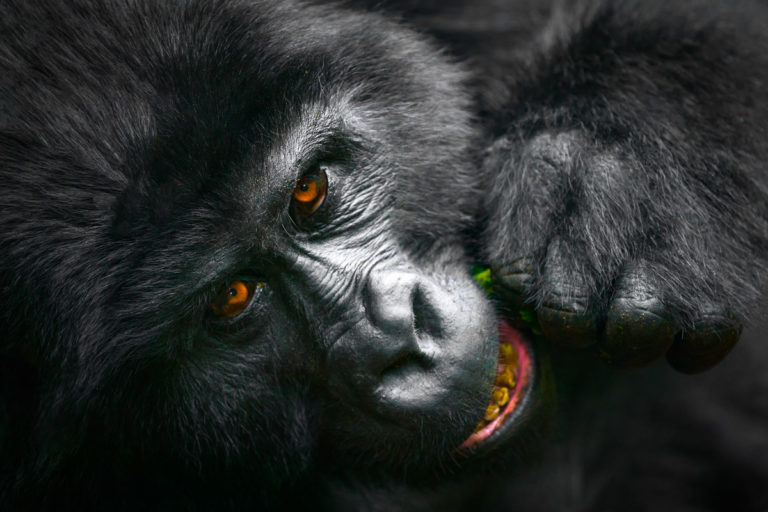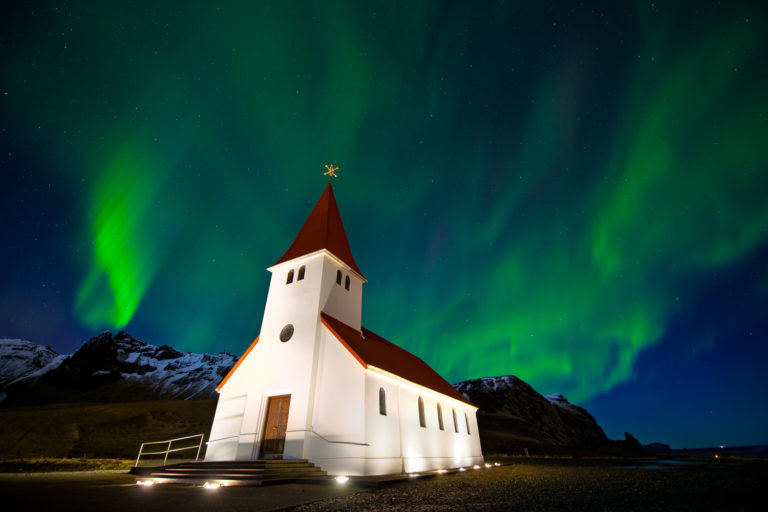I think it is safe to say that 2020 has not turned out the way any of us had hoped. In what started out as a promising year, has now evolved into some sort of poorly made B horror movie with a storyline that doesn’t seem to have an end in sight. This new reality of dealing with this pandemic has been thrust upon us all, leaving many with more questions than answers. That is where I hope to come in and help! You see, while I have been a full-time landscape, travel and wildlife photographer for 13 years, I had another life prior to this one that fortunately has experience with this kind of situation. Right out of college, I found myself working in a Hospital in Dallas, Texas as an Assistant Safety Administrator that was in charge of not only our Decon Team but also putting together disaster and pandemic mitigation and response programs. Who would have expected this kind of work experience would end up being so valuable? Certainly not me!
Regardless, I am a big proponent of the mentality that one should “hope for the best, but prepare for the worst”, which helped me write “A Photographer Guide to Navigating the Pandemic” in the first place. So in response, I put together this ever-evolving guide to help other creatives, artists and small business owners navigate these uncertain times. I not only talk about the severity and reality of the COVID-19 disease, but also spend a lot of time letting you know about the economic options you have at your disposal to help you deal with any significant loss in income. Additionally, I talk a bit about the future and give you some ideas on how you can remain both sane and creative while you are stuck at home under some form of self-quarantine. While much of this article can be universally applied throughout the world, there are large parts that are specific to the US only, such as any talks of loans, grants or the stimulus packages put together by our government.
Most importantly, as I mentioned above, this article will be “ever-evolving” which means that I will be updating it regularly with new information as things change. Feel free to leave any questions, comments or ideas you have in the comments section below, but for now, let’s get started!
What Is COVID-19?
Let’s start this off with a little science lesson. When most of us think of COVID-19, we are thinking about the virus, but that is not entirely accurate. COVID-19 is actually the name of the disease while SARS-CoV-2 is official name of the virus that carries the disease that has been infecting large portions of the world. For example, HIV is the virus that causes AIDS. People often know the name of a disease, such as measles, but not the name of the virus that causes it, rubeola (SOURCE). Regardless of this, any time I mention COVID-19 in this article, please know that I am talking about both the virus and the disease, just so there is no confusion.
Now, most of us know that SARS-CoV-2/COVID-19 is a new respiratory virus that originated in Wuhan, China and has since spread around the world. However, regardless of the fact that we live in the golden age of the Internet, there is a lot of miss-information out there about what this virus is, how it is transmitted and its impact on the world. So let’s break things down a bit to make sure everyone is on the same page before we dive right into this article!
What Are the Main Symptoms of COVID-19?
While we live in the digital age of webMD professional keyboard Drs around the wold self-diagnosing every common ailment, it is important to know what symptoms COVID-19 can present. So what are the symptoms?
- High Fever
- Dry Deep Cough
- Trouble Breathing

While other symptoms can present themselves, these are the three most common. That said, most people that get this virus will be asymptomatic, which means they are carriers of the virus, but will often expect little to no symptoms at all. But I don’t want to get too ahead of myself as we will talk more about this shortly.
How Is COVID-19 Transmitted?
While we are still learning a lot about this virus as it wreaks havoc around the globe but we do know how it is transmitted from person to person. Because it is a respiratory virus that lives in your lungs, it is most commonly spread to other people through droplets produced when an infected patient sneezes or coughs. When that happens, those droplets typically fall to the ground, landing on objects that many of us touch every day, such a the door to a grocery store, the seat of an airplane, the walking rail on a set of stairs.
Once we have it on our hand, human beings have a bad tendency to obsessively touch their face, mouth, nose, and ears, thousands of times a day…without even noticing it. In reality, it can take mere seconds for the virus to go from one person’s lungs to the air to the door handle to your hand and then your face.
How Can You Protect Yourself?
While this virus is highly transmissible, there are ways that you can protect yourself.
- Wash your hands for 20 seconds at a time with soap. This will help break down the outer shell of the virus, effectively leaving it to die on its own.
- Be careful of what you touch when you go out in public. If you have a pair of gloves, feel free to use them, but wash them afterward or if they are disposable, throw them out before going inside your home.
- If you need to cough or sneeze, cover your mouth, so you don’t share it with others if you happen to have it.
- You can use hand sanitizer and wet wipes, but you need to make sure they have at least 60% alcohol or it won’t be as effective against the virus. Keep in mind that most hand sanitizers are anti-bacterial…and not anti-viral.
- If your region of the country allows it, online grocery shopping can be helpful to minimize any exposure. Just be sure to toss the bags they are delivered in and wash all fruits and vegetables.
- Practice “Social Distancing”, which I will cover in more detail in a few minutes.

Why Is This Virus So Dangerous?
One of the most frustrating things about COVID-19 is that a large portion of the population of this planet doesn’t fully understand why this virus is so dangerous. They see the number of people infected (741,030 worldwide as of March 30th) and the number of people that have died so far (35,114), but when they compare those numbers to something like the yearly flu, they don’t fully understand. So let me try to help.
COVID-19 is a “Novel” virus which means that it is brand new to humanity. This means that not only do we not have a vaccination/cure for it, but that everything we know about it we are learning as we go. Which has lead to some uncertainty. So what do we know about it now 3 months into the spread of this pandemic?
- It is a respiratory virus, which means that it lives in your lungs.
- It attaches itself deep in your lungs, potentially causing lung damage even if you fully recover from a severe case of the disease.
- Unlike the common flu that has symptoms that often come on rapidly. COVID-19 has an incubation period of 5-14 days, which means that while you feel fine, you are potentially spreading the virus to everyone around you.
- 80% of the people that get the virus will suffer either mild or no symptoms at all, otherwise known as being “asymptomatic”.
- While the average mortality rate for all demographics won’t be officially known until after the virus has run its course over the planet, it is estimated currently between .6% and 2.4% on average. For comparison, the yearly flu has a mortality rate of .1%. You do the math…
- It is significantly more deadly to those with compromised immune systems, such as those dealing with cancer, other diseases, and the elderly.
- While it is extremely rare for COVID-19 to affect children, they can absolutely be carriers for the virus infecting older adults without knowing it.
- Because testing for COVID-19 isn’t wide-spread, we have no idea how many people in the US (and the world) are truly infected with the virus.
Currently, the US alone is expecting anywhere between 100,000 and 200,000 deaths because of this virus (as of March 30th, 2020). Right now the US has 2,572 deaths. The drastic increase from 2,500 to 200,000 deaths is a result of the exponential growth rate of transmission throughout the country. One person infects another. Those two infect two more. Those four infect 4 more. How many days before you reach millions of infections? In 30 days you are over 5 million infections, with the majority of growth happening in the last 5 days. Let that sink in…
So, long story short, it is a highly transmissible virus with a long incubation period and a mortality rate that is significantly higher than the common flu. The chances of you getting the virus and having severe complications might be small, but who wants to be responsible for unknowingly giving the virus to an older friend, family member or loved one? Not me & I imagine not you either!
Can I Get Tested For It Right Now?
The simple answer is probably not. While I will leave it to news organizations to cover the shortcomings of the CDC in the early stages of this virus hitting the US back in January of 2020, the truth is that we simply don’t have the testing capacity or technology to allow for wide-scale testing in the US right now. Even if you have one of the symptoms of COVID19, most hospitals and care centers don’t want to test you unless you are showing symptoms. They want you to stay home safe.
The truth is that we will have to wait for a low cost, at-home solution to present itself for the US and other countries to fully understand the impact of the COVID-19 virus. While the infection amount in the US is officially 143,532 (March 30th), the reality of the situation is that we are probably anywhere between 2x-6x that amount. We just simply haven’t tested those individuals just yet.
Social Distancing
If you have been watching the news, you have undoubtedly heard the term “social distancing” before. But what does it mean? Why is it important? What can I still do? Let’s answer these questions one at a time.
What Does it Mean?
Social Distancing refers to the need to distance yourself from other individuals so that you don’t unknowingly infect someone else and vice versa. The CDC is recommending a minimum of 6 ft, although I personally prefer 10 ft of distance to be safe. Additionally, we are being asked to minimize the number of people we surround ourselves with outside of our own home. Each state in the US is offering different guidelines, but for the next month (April), I recommend setting this amount of “acceptable” group sizes to an absolute minimum. For me and my family, this will only include a trip to the grocery store when needed. Outside of that, we are hoping for no external contact.

Why is this Important? (Flattening the Curve)
The truth is that most people don’t fully understand how the COVID-19 virus is going to cause the most deaths. While the virus is deadly in and of itself, it can also be treatable for many of those infected. This is done in part by using ventilators in hospitals to help patients breathe. The problem is that every hospital around the globe, including those in the US, has a finite amount of hospital beds and ventilators. So when a hospital can no longer accept patients, or if it simply runs out of ventilators to help patients, we see a massive spike in deaths because those with severe symptoms of the virus can’t get the help they need. Look at Italy and Iran as perfect examples of this.

This is where the term “Flattening the Curve” comes from. We want to limit the number of people infected with the virus so that the number of people with severe symptoms of COVID-19 do not over-run our hospitals all at the same time. If we can keep the curve of infections lower than what the hospital system can handle, we have a better chance of lowering the overall mortality of the virus itself.
What Are You Allowed To Do?
With the majority of states in the US enacting some form of a “Stay at Home” order, it is important to know what you are allowed to do in this situation. Even with a stay at home order, some businesses have been determined to be “essential” and will be staying open. As long as you are practicing “social distancing”, you can do the following:
- Walk your dog around your neighborhood
- Go outside in your backyard
- Exercise Outside (No Gyms or Yoga Studios)
- Go Grocery Shopping
- Get gas at gas stations
- Go the pharmacy to pick up medication
- Order takeaway or have food delivered from a restaurant
- Spend time with your family
- Download an app like Zoom to allow you to video conference with groups of people
- Surf the internet like there is no tomorrow 🙂

What Should You Avoid Doing?
While I would think this section would be self-explanatory after reading the first half of this blog post, every time I watch the news I am surprised at what people think is okay, safe or acceptable with a pandemic going around. So what should you NOT do?
- Do NOT gather in large groups of any kind for any reason
- Do NOT go to church
- Do NOT go to the beach (Most are closed now anyway)
- Do NOT go to the gym
- Do NOT offer “pandemic” photography services…can’t believe I have to say this one…
- Do NOT go to a bar
- Do NOT go to a party
- Do NOT got within 6ft of someone else if you can avoid it
What Should You Do You Are Feeling Sick?
When the world is dealing with a dangerous pandemic, there can be nothing scarier than starting to feel ill yourself. If this happens to you, don’t panic. Calm yourself down. Take a few deep breaths. Stop looking up WebMD online and follow the following protocols that have come from Dr. Fauci, the lead Dr. of the US Pandemic Response Team.
Avoid Going to the Hospital At First
When people start feeling sick and they get scared, their first instinct is to head to the hospital, especially during a pandemic. This, however, is a mistake in most cases. The core symptoms of COVID-19 is a fever, deep dry cough, and trouble breathing. If you just have 1 of these symptoms, most hospitals will not test you for COVID-19 and simply tell you to wait it out at home. Why? Because 80% of people that get the disease will be able to handle it just fine and if you happen to have the virus, they do not want you coming to the hospital and infecting other patients that might have a more compromised immune system. So What Do You Do?
Call Your Physician or Insurance Carrier
The first thing you should do is either reach out to your private physician or your insurance carrier, most of which who have set up dedicated COVID 19 hotlines so that you can speak directly to a nurse. They will be able to give you more up to date information on what you should do, where you should go if things progress and the current protocol your local hospitals are utilizing.
Please remember that if you are starting to feel ill with some or all of the COVID-19 symptoms, there is a chance every other member of your house hold now has what you have, even if they are not showing symptoms. In this case, if you are self quarantining at home, please make sure the rest of your family does as well. Otherwise you could be spreading the virus to other people.
If Things Get Worse
If things progress all of a sudden you find yourself with all three COVID-19 symptoms, call your local physician, insurance carrier or local hospital immediately and let them know what is happening. They will be able to direct you to where you need to go and what steps you will need to abide by so that you minimize the chance of you spreading the virus to other people if your condition requires a hospital visit.
Understanding Travel Restrictions
With the current “Stay at Home” Orders of most states, I am including this section of this article so that I can keep it updated in the future when things change. Currently, it is highly recommended that you do NOT travel unless it is absolutely necessary.

Domestic Travel
While flights are still flying around the US, they are doing so at a severely decreased capacity. As new hotspots pop up around the US as the virus continues to spread in waves, there is a good chance this will further disrupt any domestic travel plans.
International Travel
Currently most major US based airlines have temporarily stopped all of their long haul flights around the world as the airline industry awaits any changes to the current situation with COVID-19.
How To Maintaining Your Creativity & Sanity
In these uncertain times, it can be more important than ever to find ways to be creative and of course maintain your own sanity, especially since we are all expected to stay home for the month of April, if not longer. Here are a number of things I will be trying myself that I think can help other photographers out there.
Brush Up On Post Processing
While the majority of photographers probably prefer to be out in the field or in a studio capturing images, that option is simply not a reality these days. Instead, I highly recommend that photographers spend some time processing their backlog of images that have been idly waiting on one of their hard drives. I personally have 10’s of thousands of images that I haven’t touched from adventures, expeditions, and workshops I have led all over the globe. Now is a great time to catch up on all those images, especially since the excuse of “I don’t have the time” doesn’t really apply anymore 🙂


Force Yourself To Use Different Lenses
While we might not be able to travel around the world or visit exotic locations right now, that doesn’t mean that we can’t take photographs. This is a great time to force yourself to use some of the lenses that you haven’t touched in a while. One of the easiest examples of this is to try macro photography. Go out in your backyard with your macro lens or even a telephoto (like a 70-200) and work on capturing images of the world beneath our feet. You might be surprised at what you find…And what you learn in the process!


Learn New Techniques
With all this newfound time on your hands, it might be time to dive into some post-processing tutorials to learn that technique or program you never got around to. Brush up on all the new features from in Adobe Lightroom, Photoshop, On1 Photo RAW, Capture One, Luminar 4 and others out there. YouTube can be a great resource to understand many processing concepts, but I still find specific processing tutorials from photographers you admire to often be the best way to learn.
I am spending much of the month of April refreshing all of my online tutorials found in the “Photo Education” section of this website to help all of those interested in learning how I process my landscape, travel, portrait and wildlife images. These should be released sporadically over the next few weeks, starting very soon. You can learn more by checking out my Photo Education page.
Read A Book
Thanks to Pratik Naik and Vice.com, I learned that the Internet Archive is temporarily eliminating all wait lists for tons of e-books online. The result is the creation of a National Emergency Library that is open to anyone with an internet connection and provides access to 1.4 million books for free. To learn more about this, head to OpenLibrary.org or the HELP section to see how it all works.
Create A New Personal Project
If you are looking for something to spur your creativity, give yourself a personal project to document during your quasi quarantine at home. This could do with how your family is coping with COVID-19 or what is happening around your neighborhood. You could do a photo a day project or capture scenes of your neighborhood or city when you are out getting groceries. The sky is the limit!
Join or Create a New Online Community
With all of us hopefully practicing safe “Social Distancing”, now is the time to either create or join an online community. Between Facebook Groups, Instagram, Flickr, What’s App Groups and Zoom Video Conferencing, there are plenty of ways that you can connect and engage with other photographers out there safely.


Here are a few examples…
“A Photo a Day” created by Jennifer King
“Aspiring & Emerging Photographers” created by Colby Brown
“World Class Landscape Photographers Group” by Unknown
“Landscapes / Seascapes / Cityscapes” by Unknown
“Photoshop and Lightroom” by Unknown
“Alpha Universe” Website
Economic Options For Photographers
While the virus itself is causing havoc around the globe from a health standpoint, the economic impact of this virus is also going to be severe and long-lasting. The photography industry is certainly not going to be insulated from the fall out of this virus, so it is good to be prepared for what’s to come. The truth is that many businesses are simply not going to make it through these troubling times. If you are a Wedding or Portrait photographer, it might be months if not longer before clients will feel comfortable having their images taken. If you shoot sport or concerts, most of those events have at least been canceled through to the fall and maybe through the end of the year. If you are a landscape and travel photographer like me, you have to wait until travel restrictions are relaxed before you should even think about jumping on a plane.

So what does this all mean? It means that there are most likely hard times ahead for many of us and it is important to know what kind of assistance you might qualify for under the new CARES act that have been approved by our current administration. CARES stands for Coronavirus Air, Relief, and Economic Security Act” and there is a lot inside it for photographers and freelancers.
Will You Recieve a Check from the IRS?
One of the most talked-about benefits of the recent $2 trillion economic relief plan was that households would be getting a check from the government to help cover some of your costs of dealing with the fallout of COVID-19. Currently, this is simply a one-off payment, but there is a possibility of another coming in May.
Who Gets A Check?
Most people will get a check of $1200 per adult (max $2400 per couple) with an additional payment of $500 per child that is 16 years or younger in your household. In order to receive the full amount, you will need an adjusted gross income of $75,000 or less ($150,000 for married couples) on your last filed tax season. If you haven’t filed for 2019, this would mean your 2018 filing. Anything above those numbers means that your one-time payment will decrease in size until you gradually hit zero. The max you can have made is over $99,000 as an individual or $198,000 as a couple, after which you will not receive any money from the IRS, regardless of your current financial situation.
When Can You Expect The Check?
Within the first three weeks of April…in theory.
How Will You Receive The Check?
If the IRS already has your bank account information, it will transfer the month via direct deposit into your account.
Can You File For Unemployment?
One of the biggest changes coming out of the Economic Relief Bill was the changes to Unemployment, especially to those in the photography industry. Let’s focus on what’s new and how it might apply to you…

Who Is Now Covered?
For the first time in history (if I am correct) you can now file for unemployment if you are a gig worker, freelancer or independent contractor. This is a big deal as prior to this bill, you could not file if this job title applied to you.
How Much Will You Get?
This is going to change on a person to person basis as it has to do with the state you live in and the amount of income you used to make. I have been told the Disaster Unemployment Assistance Program will help you determine how your benefits will be calculated. On top of what portion of your income qualifies, you are also eligible for the additional $600 a week from the Federal Government that will go on top of the normal benefits of the program.
How Long Will This Last?
Currently, most states will provide up to 26 weeks of benefits, but the Economic Bill allows for an additional 13 weeks. So that’s a total of 39 potential weeks of unemployment coverage for most of those affected.
How Do You Apply?
This is going to start at the state level. You will need to file for unemployment with your local State Government first and foremost. For many, if not all, you can do this online. Once you have gone through that process, the Federal Government “should” attach the additional $600 payment to any checks you receive.
Anything Else I Should Know?
All of this requires the State and Federal Governments to not only work efficiently together but to do so in a situation that hasn’t been done before. This means that they are making up the processes as they go. I mention all of this so that you can expect some roadblocks and potential delays as all of this is happening in real time.
What About Small Business Loans?
One of the best things coming out of the CARES act is $350 billion for small business owners. So if your photography business is in threat of closing of going bankrupt because of COVID-19, you do have some options at your disposal in terms of Small Business Loans. Through the SBA (Small Business Administration), you do have some options for you as a small business or freelancer.
Paycheck Protraction Program Loan Guarantee
One of the most significant loan options that is applicable to the photo industry was part of the recent Coronavirus Stimulus package. Under this program, the SBA will back small-business loans through local lenders (currently 1800 around the US). So what are the important parts of this program?
- Self-employed, sole proprietors, freelance and gig economy workers are also eligible to apply but you have to be in operation before February 15, 2020.
- Maximum interest rate is 4%
- Loan terms of up to 10 years
- No personal guarantee or collateral is required to get the loan.
- Payments can be deferred from six to 12 months if needed.
- Part of this loan can be forgiven and not counted as income if you spend it during the first eight weeks of operating expenses. This part might apply to larger companies, but it is worth looking into.
To apply, you will need to apply for the Paycheck Protection Loan directly through your local lenders, but if you want more information, check out the SBA website.
COVID-19 Economic Injury Disaster Loan Application
In response to the Coronavirus (COVID-19) pandemic, small business owners in all U.S. states, Washington D.C., and territories are eligible to apply for an Economic Injury Disaster Loan advance of up to $10,000. The issue is that the initial text with this loan was misleading. In reality, this loan is giving out $1000 per employee, so if you are a photographer running a small business, you will only receive $1000 in total from this loan. I have received mine already (As of April 21st, 2020).
The SBA’s Economic Injury Disaster Loan program provides small businesses with working capital loans of up to $2 million that can provide vital economic support to small businesses to help overcome the temporary loss of revenue they are experiencing. The loan advance will provide economic relief to businesses that are currently experiencing a temporary loss of revenue. Funds will be made available within three days of a successful application, and this loan advance will not have to be repaid.
You can file for this loan directly through the SBA HERE.
Are Grants a Viable Option?
While small business loans are generally a more viable option, there are some grant opportunities out there. Facebook recently launched its Small Business Grant Program that contains over $100 million in cash grants and ad credits to help during COVID-19. While they are not taking application just yet, it is said to open any day now. You can find out more information HERE.
I will update this section with more grant opportunities as I find them.
What Happens Next With COVID-19?
This is the question that everyone is asking themselves and the truth is that no one really has an answer. That said, let’s talk about a few of the most asked topics with this virus…

How Long Will This Last?
Unfortunately, I don’t have an answer for you. Currently, in the US, the Federal Government is recommending the same “Social Distancing” guidelines to last through the end of April, but I expect this to last longer than that. Currently, NY state is projecting a peak number of infections and deaths to hit in late April and run into May. As other hotspots are starting to pop up, such as New Orleans, Miami, Chicago, and LA, I have a feeling we will be dealing with this for months, maybe through to the end of the year. Why? Because of the 14 incubation period of the virus and the fact that not everyone is practicing “Social Distancing”.
Miracle Drugs
While there are a few promising drugs out there that might help with COVID-19, we are not close enough to true clinical trials to have these as widespread options for enough people. Currently, the WHO is testing four different drugs: Remdesivir (which was attempted to treat Ebola), Chloroquine (Which is used to fight Malaria and Lupis), Ritonavir and Lopinavir (which are using together to fight HIV infections) and Interferon-beta (coupled with Ritonavir & Lopinavir which is used to fight Multiple Sclerosis). This is part of a large trial called “SOLIDARITY” that the WHO is welcoming the help of other labs and countries to help speed up the testing process, which will still take a while.
Regardless of all this, it is important to note that no treatment has been clinically proven to be effective against COVID-19 just yet, said Dr. Ghebreyesus of the WHO.
The Reality of a Vaccination
It seems that every day that I turn on the news, I see a new lab reporting that it has found a potential vaccine for COVID-19, which is good news. The problem is that from the start of a vaccine being created to when it will be viably ready for public use, the timeline is generally 8-16 months. The reason for this is the lengthy and vitally important human trials that are required for vaccination to get the green light. The last thing any of us want is for a vaccine to cause serious side effects in those that take it. So yes, a vaccination is coming…But don’t expect one in 2020.
A Positive Note To End On
As I said at the start of this article, I am always a big fan of planning for the worst and hoping for the best when it comes to a situation like the one we find ourselves in. While there is a lot of uncertainty and fear that can come with dealing with a pandemic, it is important to find the silver linings as well. While the struggle to survive the virus itself or the economic fall out will be a challenge for us all, we are all going to go through this together. As a community of creatives, we need to come together and find ways to spur our creativity and imagination. Find ways to lift each other up. Find ways to innovate and come up with new ideas and solutions to problems that were not a reality just a few months ago. If you are looking for ways to help other artists and photographers, my good friend Michael Bonocore wrote up a great piece found HERE.

We will get through this and at some point when all of this is behind us, we will all be back out in the field enjoying scenes like the one above!
What Questions Do You Have?
This blog post will constantly be updated with new information and new sections as things change out there in the world, but if you have any questions, comments or suggestions, please leave them in the comments below so that other photographers can learn from the answers.





